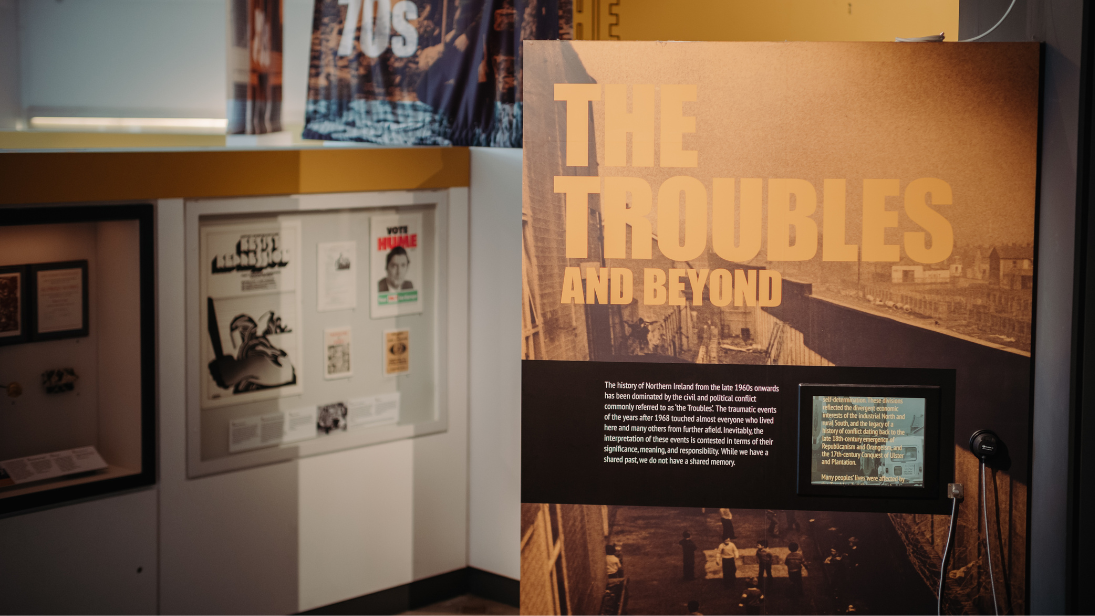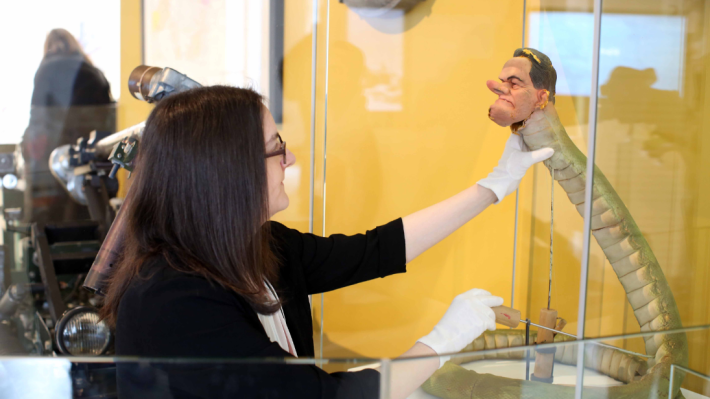The history of Northern Ireland from the late 1960s to the present day has been dominated by the civil and political conflict known as ‘the Troubles.’ The events that took place here after 1968 have impacted not just the people of Northern Ireland, but people across the world. Our collection covers themes of politics and conflict, and the impact of both on everyday life, people and communities.
The Troubles and Beyond exhibition is not exclusively focussed on the conflict, but relates to contemporary history and therefore includes objects that represent our wider social, cultural and economic history. The collection is a dynamic one and it continues to be developed and refined. Recently acquired items include George Best’s Northern Ireland football jersey, a puppet of Gerry Adams from the TV series Spitting Image, material relating to the life and career of Belfast-born actor James Ellis and a collection of Pride t-shirts dating from 1991 when the first march was held in Belfast.
We are constantly working to build and develop our contemporary collection to show social change, working life, arts and culture, and the ever changing environment around us. The Troubles did not take place in a vacuum. The reality of life is reflected in our personal memories and the photographs and mementoes that underpin our family history.


